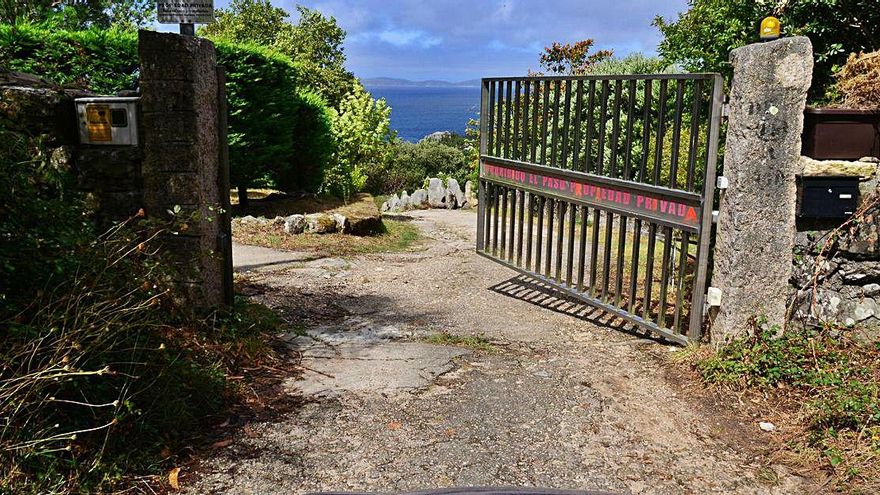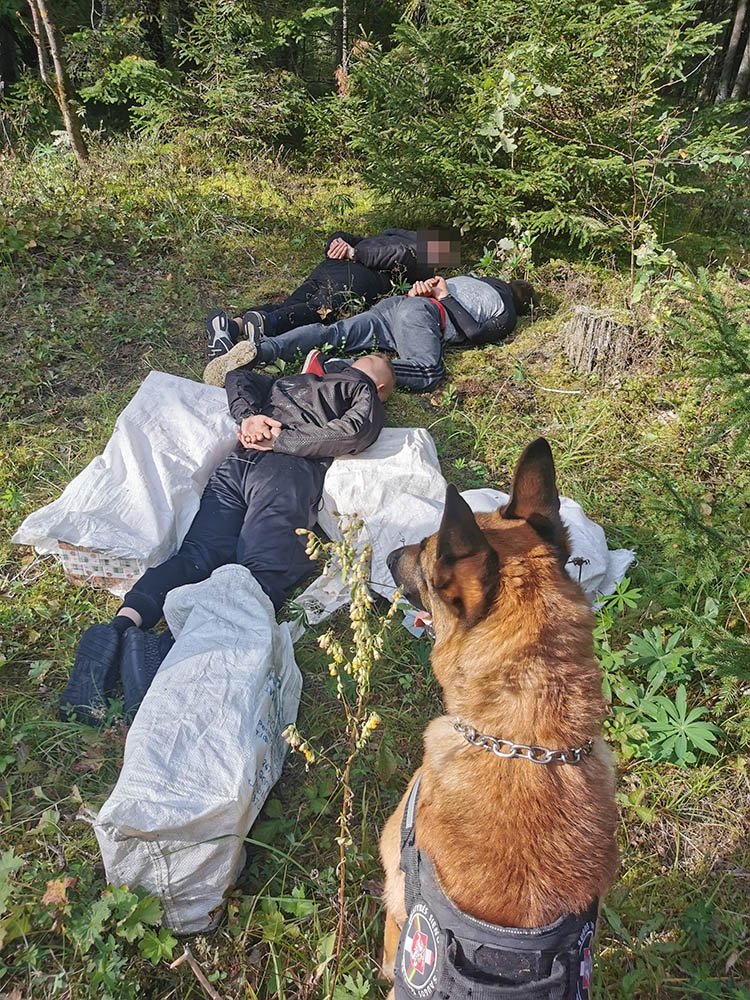It was at the end of last August when the Local Police received a call from a municipal worker in which they alerted that in the Atalaia area and on the access paths to Punta Couso, vertical signs were placed prohibiting the passage of both pedestrians and to bicycles. The report indicates that when the patrol arrived at the place of Punta Couso, they found the controversial portal closed, so they could not verify the facts, but after going through the interior tracks that give access to different buildings in the area, it was possible to verify the placement of various vertical traffic signs in the interior sections of the roads in which it is warned of dead-end roads, private farms and prohibited traffic. In total, up to 9 vertical signals were counted. The Local Police assures that “the person in charge of the placement of the signage is unknown, but it may be probable that since they are located within the closed zone of Punta Couso, they could have a relationship with the managers or owners of the private urbanization ”.
At the moment, the City Council of Cangas did not move a tab. He took note of the report made by the Local Police and left the matter in the hands of his legal advisers, which as the years go by, it does not calm down, but grows, despite the existence of court decisions.
At the time, the Provincial Court of Pontevedra ruled that “we understand that it has been proven that the road is not public, not that it belongs to the private property of the plaintiff, as a member of the hereditary community that she forms with her siblings and for whose benefit she litigates, all children by Carlos Requejo Buet when we have the information. The courts establish that the exchange granted on March 25, 1988, recognizes the construction by Carlos Requejo of a track about three meters wide from the entrance gate to the original farm. And it follows, furthermore, that the track opens as demand maintains in the 1970s, in any case, after the division of the parent estate and its part being awarded to Carlos Requejo, in 1967. Before that, the track or the disputed path, everything was a single property ”. But the judgment of the Hearing of Pontevera also points out that neither the defendant (the property of the rural tourism house located in the area) nor the City Council of Cangas accredits the public nature of the road, which is not inventoried.. The aforementioned ruling adds that the only data from which public access can be deduced are the urban planning licenses granted to the various segregated farms, where houses were built. “But that does not make the access a public road when it is proven that it is a private road. It possibly supposes an urban irregularity that had to have been corrected previously by the competent administration, without it being established that it has done so. The only public path declared is that it is called Outeiro, which reaches the entrance gate of the original farm. ”
This sentence, which in theory was going to squid the tension that existed in the area (shellfish workers passed along the way and also people who pretended to see the lighthouses), did not do so, on the contrary, it further irritated the population against the owners of the urbanization. The socialist Cristóbal Fernández, who at that time occupied the provincial headquarters of Costas, was scandalized by the portal where it is noted that the passage is prohibited because it is private property. The municipal group of the Popular Party chose to ask the plenary to initiate the expropriation file to take over the road and the current councilor of Facenda, Mariano Abalo, was betting on the Inventory of Assets to recover the road. At the moment, nothing was done.
But the residents of the urbanization also feel fearful about the situation. At the time, they denounced fear and defenselessness in the face of the different acts of vandalism they suffered in the summer of 2017. They claimed that there had been robberies and situations that altered normal coexistence, such as the presence of dangerous dogs loose, insults and threats.
“Have you not seen what it says there?
There are residents of Cangas who comment on how they were struck by passing through the area on the way to the beach, indicating if they had not seen the signs. The problem is that. The fact that to access a public area you have to go through a private one, although there is always the possibility of going through the Camino Vello, which is the one that leads to the rural tourism house, which is its natural access. The residents of O Hío also remember that the Outeiro path, which leads directly to the controversial portal, belongs to the Community of Montes, Therefore, the inhabitants of the urbanization could also be prohibited from passing through it.
– .


